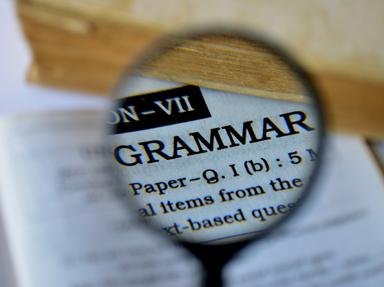Quiz Answer Key and Fun Facts
1. What do we call the conversation between two or more characters?
2. What do we call the series of related events that make up a story?
3. This is known as the uncertainty or anxiety the reader feels about what will happen next in a story.
4. A story with no known author, that originally was passed on from one generation to another by word of mouth is known as a _______________.
5. The overall mood or emotion of a work of literature is known as the __________________.
6. Irony is a contrast between expectation and reality. Which of the following is not considered to be a type of irony?
7. A brief story in prose or verse that teaches a moral or gives a practical lesson about how to get along in life is called a ________.
8. A character's _______________ is any force that drives or moves the character to behave in a particular way.
9. The story of a real person's life, written or told by another person, is called a ____________________.
10. '...And the silken sad uncertain rustling of each purple curtain' -Edgar Allan Poe, from 'The Raven', shows a type of figurative language called __________________.
11. Which of these terms, that can also be known as anthropomorphism, is used to describe a figure of speech in which a nonhuman thing or quality is talked about as if it were human?
12. The story of a person's life, written or told by that person is called an ______________________.
13. A story written to be acted in front of an audience is called a ___________________.
14. Buzz, rustle, boom, ticktock, tweet, and bang are all samples of _______________________.
15. The time and place in which the events of a work of literature take place is called the ____________________.
16. The voice talking in a poem is known as the _______________.
17. The idea about life revealed in a work of literature is known as the _____________________.
18. An exaggerated, fanciful story that gets 'taller and taller,' more and more far-fetched, the more it is told and retold is called a _____________________.
19. Prose writing that deals with real people, events, and places without changing any facts is called _______________________.
20. A famous author of fables is ______________________.
Source: Author
Melba
This quiz was reviewed by FunTrivia editor
looney_tunes before going online.
Any errors found in FunTrivia content are routinely corrected through our feedback system.


